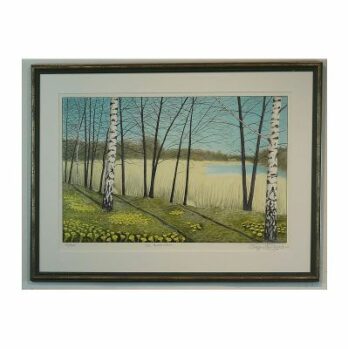Scandinavian Design: A Timeless Blend of Simplicity and Functionality

Introduction:
Scandinavian design has garnered international acclaim for its minimalist aesthetic, clean lines, and emphasis on functionality. Originating in the Nordic countries, this design movement has become synonymous with simple, yet elegant, interiors and furniture pieces that have stood the test of time. In this article, we will provide a comprehensive overview of Scandinavian design, exploring its various types, popular examples, and its unique features that distinguish it from other design styles. We will also delve into the historical context of Scandinavian design, discussing its merits and drawbacks. So, let’s dive into the world of Scandinavian design and appreciate its timeless appeal.
Overview of Scandinavian Design:

Scandinavian design encompasses a philosophy that revolves around simplicity, functionality, and minimalism. Its core principles lay the foundation for the creation of visually appealing and practical spaces. This design movement emerged in the early 20th century as a response to the ornate and excessive styles prevailing at the time. Designers sought to create an environment that was devoid of unnecessary ornamentation, instead prioritizing clean lines, natural materials, and craftsmanship. The idea was to strike a balance between aesthetics and function, ensuring that every element served a purpose.
Comprehensive Presentation of Scandinavian Design:
Scandinavian design encompasses various types, each with its distinct characteristics. The most notable ones include:
1. Danish Modern: This type of Scandinavian design gained worldwide popularity in the mid-20th century. It focuses on organic forms, sculptural lines, and the use of rich, beautiful woods. Iconic Danish designers such as Arne Jacobsen and Hans Wegner played pivotal roles in shaping this movement.
2. Finnish Design: Finland’s contribution to Scandinavian design is well-regarded and unique. Finnish designers excel in creating innovative and functional products, often inspired by nature. Brands like Marimekko and Iittala have gained international recognition for their bold patterns and timeless designs.
3. Swedish Gustavian Style: The Swedish Gustavian style emerged in the late 18th century and embodies a delicate blend of Nordic simplicity and French neoclassicism. Characterized by light, muted colors, tapered legs, and intricate carvings, this type of Scandinavian design exudes elegance and sophistication.
Quantitative Measurements of Scandinavian Design:
While it may be challenging to quantify the impact of Scandinavian design, its popularity can be observed through various indicators. For instance, the export of Scandinavian furniture and home accessories has significantly increased over the years. The demand for iconic designs such as the Egg chair and the Kikkoman bottle is a testament to the enduring appeal of Scandinavian design. Furthermore, the presence of Scandinavian design in prestigious museums around the world speaks volumes about its cultural significance and global recognition.
Differences within Scandinavian Design:
Despite its overarching principles, Scandinavian design exhibits variations across different countries and designers. Danish design tends to focus on organic shapes, while Swedish design often embraces more traditional and ornamental elements. Finnish design, on the other hand, takes inspiration from nature and emphasizes functionality. These nuances within Scandinavian design reflect the distinct cultural influences and design sensibilities of each country.
Historical Overview of the Pros and Cons of Scandinavian Design:
One of the significant advantages of Scandinavian design lies in its timeless quality. This design style has proven its longevity by maintaining its relevance and popularity throughout the decades. The focus on simplicity and functionality ensures that Scandinavian design withstands changing trends. Moreover, the use of high-quality materials and craftsmanship results in durable and long-lasting products.
However, critics argue that Scandinavian design’s minimalistic approach can sometimes result in spaces that lack warmth and character. Some find the neutral color palettes and sleek lines too impersonal and cold. Additionally, the high cost associated with acquiring authentic Scandinavian pieces might restrict its accessibility for some individuals.
[INSERT VIDEO HERE – Exploring the Essence of Scandinavian Design]
Conclusion:
Scandinavian design continues to inspire and captivate people around the globe with its timeless appeal and focus on functionality. Its simplicity, clean lines, and high-quality craftsmanship make it a sought-after design style for those seeking a harmonious and practical living environment. By understanding the origins, types, and distinguishing features of Scandinavian design, individuals can appreciate its nuances and incorporate elements of this design movement into their own spaces. Embracing Scandinavian design can transform homes into havens of simplicity, elegance, and functionality.











